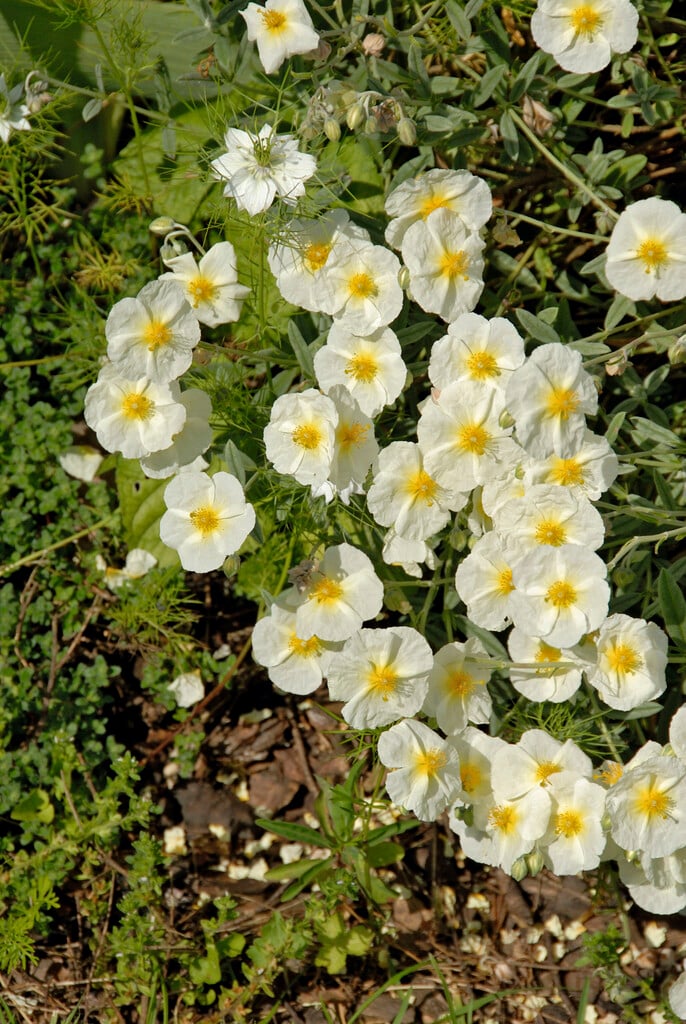Cistus populifolius
poplar-leaved rock rose
A bushy evergreen shrub, producing densely branched stems to 1.2m (4ft) high and 1m (39in) across, and lance-shaped, dark green leaves, with deeply ruffled or undulating margins. The leaves, and young stems are aromatic to the touch. White saucer-shaped flowers with a central boss of bright yellow stamens, are produced from globe-shaped, crimson buds throughout summer. The plant requires full sun and very well-drained soil in which to grow successfully, particularly overwinter, when rainfall may be higher.
Size
Ultimate height
1.5–2.5 metresTime to ultimate height
2–5 yearsUltimate spread
1–1.5 metresGrowing conditions
Moisture
Well–drainedpH
Acid, Alkaline, NeutralColour & scent
| Stem | Flower | Foliage | Fruit | |
| Spring | Green | |||
|---|---|---|---|---|
| Summer | White Yellow Red | Green | ||
| Autumn | Green | |||
| Winter | Green |
Position
- Full sun
Aspect
South–facing or West–facing
Exposure
Sheltered Hardiness
H5Botanical details
- Family
- Cistaceae
- Native to GB / Ireland
- No
- Foliage
- Evergreen
- Habit
- Bushy
- Genus
Cistus are evergreen shrubs with simple, opposite leaves and 5-petalled, bowl-shaped, white, pink or purplish flowers, each lasting a single day, over a long period in summer
- Name status
Correct
- Plant range
- SW Europe
How to grow
Cultivation
Grows well in poor, but well drained soil, in a sheltered site and full sun. The foliage may become chlorotic with age when the shrubs are grown on chalky soil.
Propagation
Propagate by seed, softwood cuttings in spring and by semi-ripe cuttings from midsummer to early autumn
Suggested planting locations and garden types
- City and courtyard gardens
- Coastal
- Cottage and informal garden
- Mediterranean climate plants
- Patio and container plants
- Flower borders and beds
Pruning
Pruning group 8 or pruning group 9 if necessary; they do not respond well to hard pruning so old leggy plants are best replaced. Pinch back young plants after flowering to encourage a bushy habit
Pests
Generally pest-free
Diseases
May be susceptible to honey fungus
Get involved
The Royal Horticultural Society is the UK’s leading gardening charity. We aim to enrich everyone’s life through plants, and make the UK a greener and more beautiful place.

